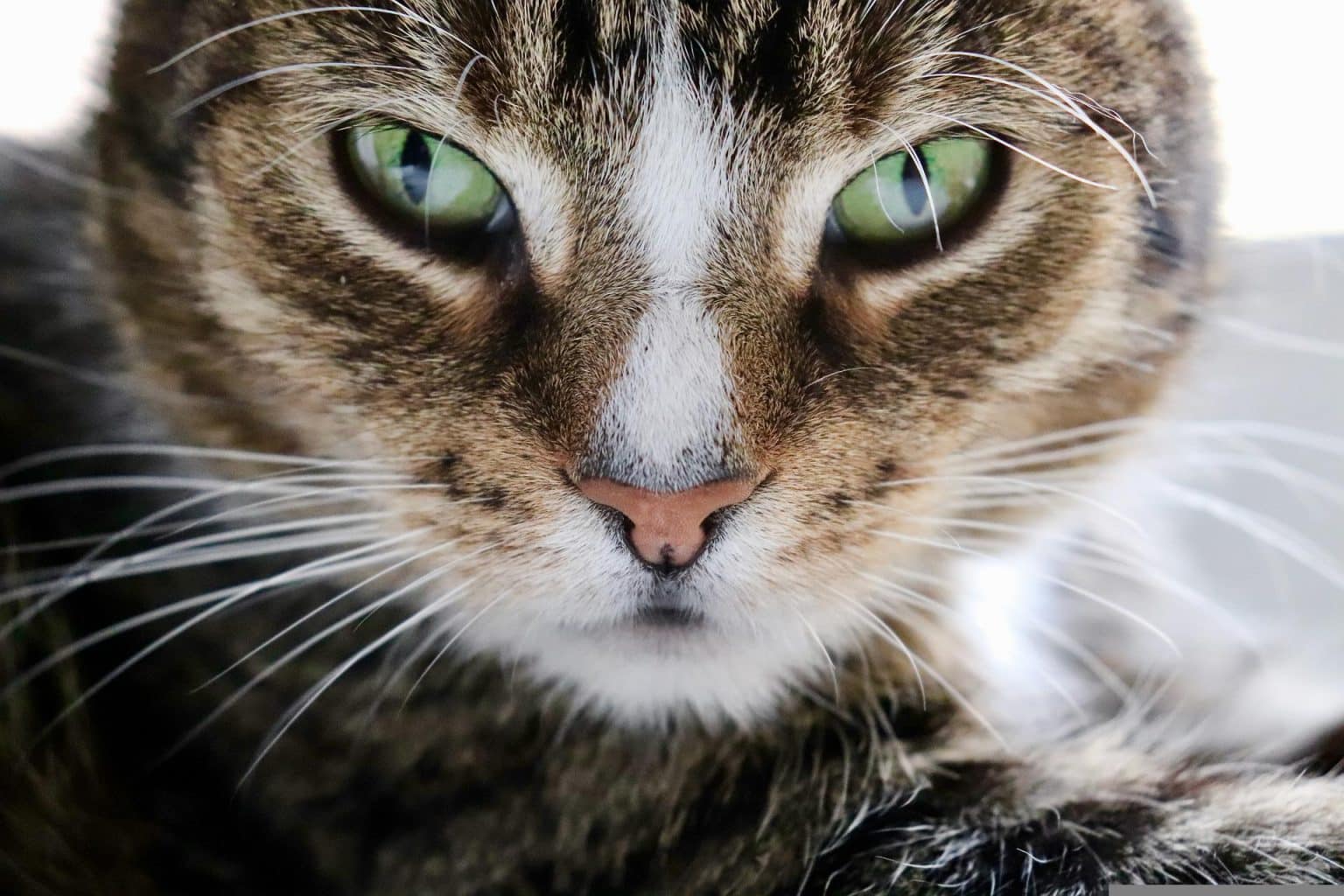All About Cat Whiskers

While most animals possess a set of them, no creature is better known for their whiskers than the domestic cat. We take a closer look at this curious feature synonymous with the feline kingdom, and why they really are the cat’s whiskers.
What Are Whiskers?
In essence, whiskers are very thick hairs, otherwise known as vibrissae. Whiskers are deep rooted, three times deeper than a cat’s regular fur. An abundant supply of nerve endings surround each whisker making them super sensitive, and a dedicated network of muscle fibres control every whisker in the muzzle. Cats have 24 whiskers in the muzzle area, and more above their eyes, under their ears, the chin and above their ankles.
How Cats Use Whiskers
Cats are skilful hunting animals, initially domesticated to rid us of vermin. Cats have a superior ability to zone in on movement, letting details like colour and pattern fall by the wayside. Because cats are crepuscular, meaning they instinctively hunt at dawn and dusk, this visual capability was vital for the survival of their wild ancestors.
But cats are generally long sighted, and can therefore not see detail closer than about 30cm. That’s where whiskers take over.
Cats have an amazing capability known as ‘whisking’. Whisking is a cat’s ability to manoeuvre muzzle whiskers forward, toward their prey. Their whiskers register the slightest touch or shift in the surrounding air, conveying the exact whereabouts of another creature, such as a mouse. Cats have it covered; where their eyes are not at their strongest, their whiskers take over.
John Bradshaw is Director of the Anthrozoology Institute at the University of Bristol and author of New York Times Best Seller Cat Sense. He has studied the super responsive whisker control of the cat. The whisking reflex kicks in once a cat is too close to focus on their target. That flexing movement of a cat’s whiskers happens so fast, Bradshaw says, that ‘the mouse doesn’t have a chance.’
Navigation
At night, their whiskers help them to navigate. Because cats are crepuscular, they use all of their whiskers to help them ‘see’ in dim light.
Whiskers generally span the width of a cat’s body. Acting as measuring tape, they help a cat to judge whether they will fit through small spaces and narrow crevices, and avoid putting their body on the line. An additional reason to not let your cat become a tubby tabby – they may find themselves caught in a tight squeeze.
Because their whiskers are so sensitive and designed as a threat alarm, cats are vulnerable to ‘whisker distress’.
Whisker Distress
All cats have unique characters, and may react mildly to the touch of their food bowl against their whiskers. But others may be more sensitive about a bowl with high sides that come up against their whiskers. A cat will either refuse food or water, or use their paws to pull their food out. If you are the guardian of such a cat, fear not. The solution is simple: change their food bowl to a flatter plate-style dish and try a water bowl wide enough that the sides won’t touch their whiskers.
Body Language
We can add whiskers to a cat’s catalogue of body language communicators; their ears, eyes, tail and body. A cat’s ability to manoeuvre their whiskers can tell us about their mood, giving us a window into how they are feeling.
If a cat’s whiskers are relaxed, it means they are relaxed. If their whiskers are flexed forward in the hunt position, take care; they are angry and ready to swipe. According to Dr. Leonie Richards, Associate Professor of Veterinary Clinical Sciences at the University of Melbourne, ‘If the whiskers are pinned back up against its face it can mean they’re quite fearful’.
Dr. Richards also advises against the trimming of whiskers for any reason other than medical. It can make them feel ‘quite disoriented … and even a little frightened’. Read more about avoiding cat misery in Quick Tips Guide For Cat Lovers!.
Whiskers are an exceptional asset of our feline friends. As well as an aesthetic enhancement of their beautiful features, they serve as a means of navigation, a hunting tool, a warning system and a communication device. It gives a deeper meaning to the expression ‘the cat’s whiskers’; exceptional, superior and better than everyone else. A bit like a cat, really.
